Tapestries, new and old – a starting point.
A tapestry hangs above the door of Lincoln Cathedral’s treasury. I must have passed it a hundred times and never noticed it until it was pointed out to me by Joan Smith, one of the Cathedral’s invaluable volunteers.
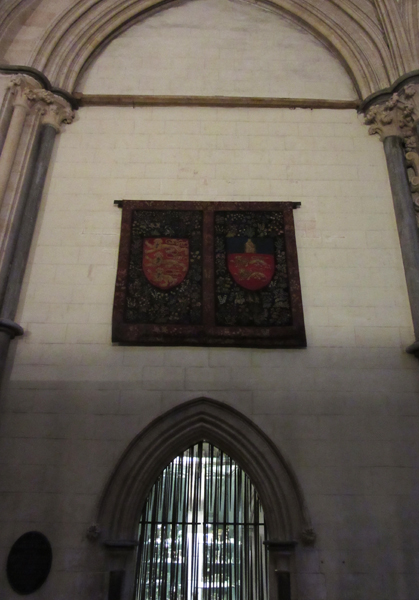
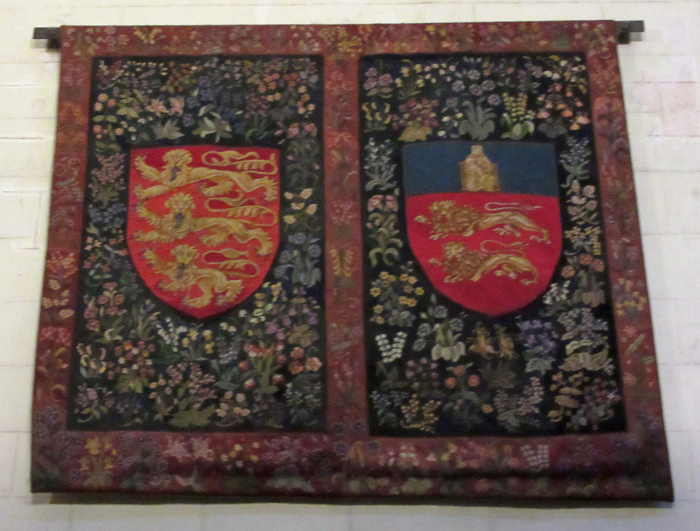
My little camera struggled with both the distance and the low light levels, but here’s a slightly better image..
The tapestry was apparently designed by Dean Mitchell and Miss Elizabeth Helen Comfort Crookshank and was presented to the Dean and Chapter in 1949. It is said to have been adapted from a set of early sixteenth century tapestries in the millefleurs style now in the Cluny Museum in Paris.
It’s impossible to know which of the many tapestries provided the original inspiration, but this is one part of La Vie Seigneuriale, showing obvious similarities.
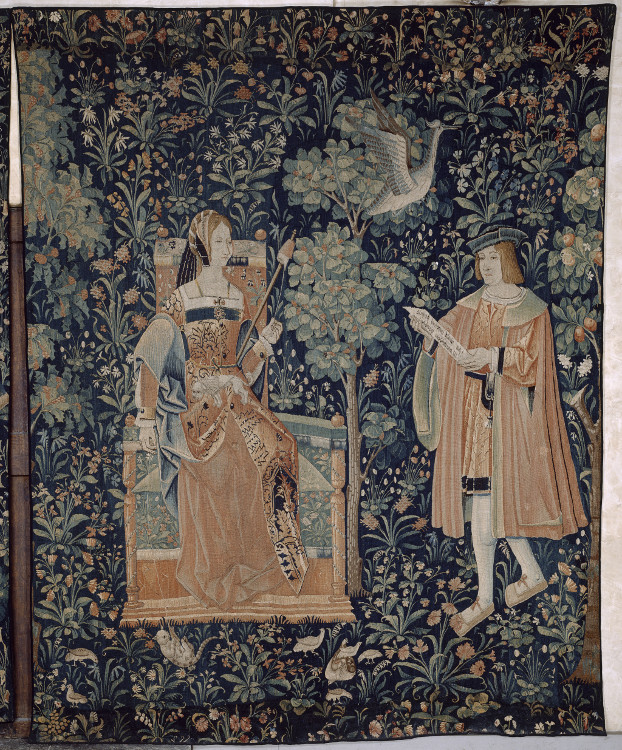
Photo: Cluny Museum, Paris
Millefleurs, meaning a thousand flowers, was a very popular style in the late 15th and early 16th century, with tapestries being woven in many different centres and workshops in Northern France and Flanders. They often included small animals and birds among the flowers, and sometimes featured the owner’s coat-of-arms. In the Lincoln tapestry the coats of arms represent King John and the See of Lincoln.
A sixteenth century manuscript
Miss Crookshank’s tapestry reminded me that flowers were also seen in sixteenth century manuscripts. Here’s a lovely example from the Fitzwilliam Museum in Cambridge. Although the border looks brown in this photograph, it was created with shell gold, giving a rich sheen as the page was turned.
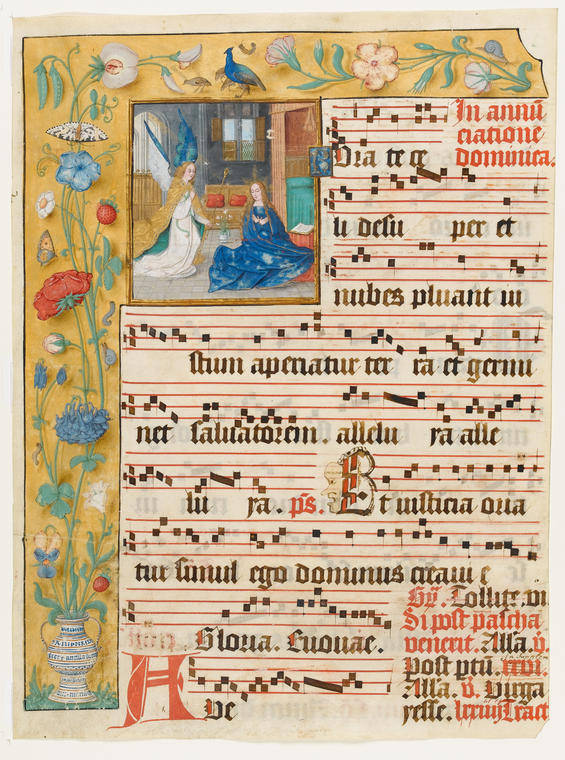
Leaf from a Gradual 1524. Photo: Fitzwilliam Museum, Cambridge.
The idea of creating a twenty-first century flower filled manuscript border became irresistible when I leant about the ‘Mary Garden’.
Lincoln Cathedral’s Mary Garden
In the 1970s John Codrington planted a garden in the cloister. The plants he chose were associated by legend and tradition with the Blessed Virgin Mary, in whose name the Cathedral is dedicated. The Harebell, for example, was once known as Our Lady’s Thimble and the Marigold was ‘Mary’s Gold’. It represents the golden rays of glory often shown the Blessed Virgin’s head. The garden no longer exists, sadly, with the central area of the cloisters laid to grass.
So here is my latest illuminated page, The Mary Garden, in 24 carat gold leaf and pigments showing the cloisters as they are today and the plants from the garden in the border – a re-interpretation of a sixteenth century style illustrating part of our Cathedral’s more modern history.
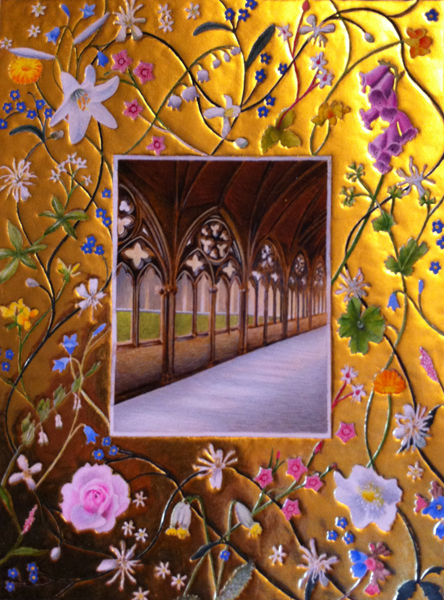
The Mary Garden, 20 x 15cm, 24 carat gold and pigments, copyright Toni Watts.
Many thanks to Joan Smith for the inspiration and information on the Mary Garden, and to Joan Panton for allowing me sight of the Cathedral’s textile records.

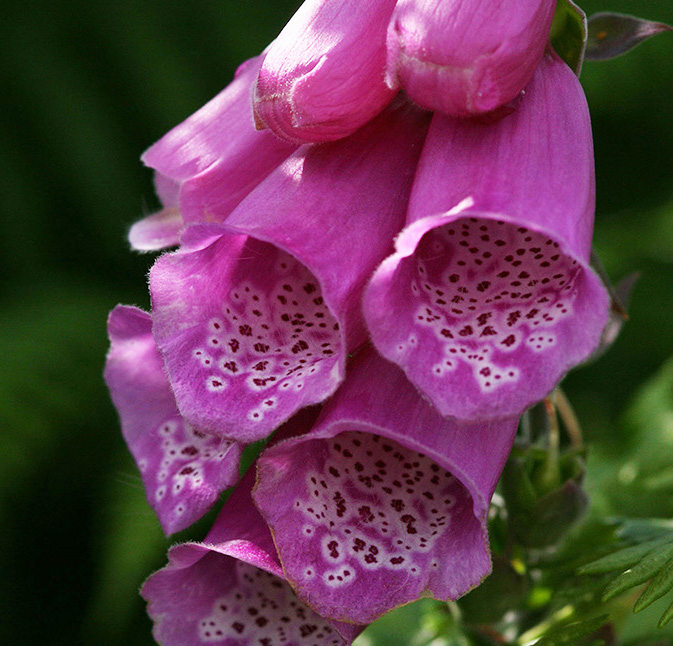
Another masterpiece Toni. Such beautiful work – you are in a league of your own.
Hope you are well.
I’ve just returned from London to find your lovely comment, Vanda – thank you!
Hello there
I was sorry to have missed your demonstration on Monday afternoon 17/06/2016. I am wondering if you will be doing more demonstration in the wren library in the near future and if so could you let m have date and time details.
I am hoping to see some of your work befor the sept workshop in the castle..
Regards
Ann
I’m so sorry to have missed your comment, Ann – I’ve been away on holiday. I’ll be in the Wren Library on 28th July and 4th, 11th and 18th August from 1-3pm. Hope to see you there!
The Cloister Garden Lincoln cathedral designed and planted by John Codrington 1979 The garden was set in seven bays at the base of the Wren Library, Beyond garden ,the enclosed area was grassed well maintained with what had possibly been a water feature set at base of which was Feverfew. It was all very immaculate in the early 1980s with all original planting in place .Perhaps no one understood the botanical significance to Lincoln Cathedral dedication.Cloister gardener 1980 s , Mary Todd.
Thank you so much for commenting, Mary. I didn’t know about the water feature with Feverfew. It must have taken a lot of work to keep the garden immaculate, but I imagine it looked beautiful in its prime. Such a shame it’s gone now.
I am carrying out research on John Codringon’s garden designs and would welcome any information about this or photographs,
Hallo Jean Cornell, I am looking after a herb garden designed by John Codrington which has been replanted. I remember the marvellous variety of plants but can’t find the original plans. Have you come across any mention or photographs of this garden at Stoke Park Pavilions?
Hello Susanna
I haven’t come across this garden but I am gradually getting together a list of commissions. I would be very unterested to hear more. Jean